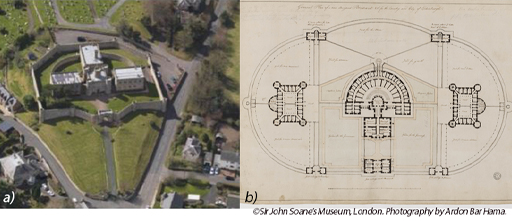8 Utilitarianism
An alternative solution to society’s ills was offered by Utilitarians. Their goal was the arrangement of society to achieve the ‘greatest happiness of the greatest number’. Social harmony, they argued, could be achieved through legislation which channelled the people’s impulses in ways that best served society. Literacy offered a means of self-improvement and, therefore, a solution to poverty.
Utilitarians also became active in penal reform. Jeremy Bentham (1748–1832) provided early leadership through his involvement in the quest to establish a national penitentiary (what became Millbank Penitentiary). His design for what he termed the ‘Panopticon’ assumed that humans wanted to maximise their pleasure and minimise their pain.
If prisoners believed that they were constantly under surveillance they would be motivated to regulate their own behaviour. He rejected hard labour, arguing that more interesting employment would lead the idle to love work. In his opinion, literacy made people more useful and productive.

While approaching the problem from different perspectives, both Fry (or the Evangelicals) and Bentham (or the Utilitarians) supported the classification of prisoners, the use of productive labour in prisons, and the provision of both religious and scholarly education. Both saw people as capable of bettering themselves, and of improving their behaviour by controlling their desires.
